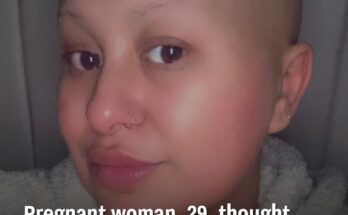Pope Francis passed away on Monday, April 21, 2025, at the age of 88, following a prolonged pulmonary illness and a papacy marked by significant reforms and internal challenges within the Vatican.
The death of the Bishop of Rome was officially announced at 9:52 a.m. by Cardinal Kevin Joseph Farrell, Camerlengo of the Vatican. In a solemn statement, he declared that Pope Francis had returned to God at 7:35 that morning.
Just one day before his death, Pope Francis made his final public appearance during the traditional Urbi et Orbi blessing in St. Peter’s Square. The moment was brief and poignant—his visible frailty did not go unnoticed. Many sensed his declining condition and took to social media to express concern and sadness.
A Landmark Pontificate
The first Jesuit and the first Latin American Pope, Francis led the Catholic Church for 12 years following his election in 2013 after the resignation of Benedict XVI. From the outset, he sought to reform the Church both internally and in its global outreach.
A vocal critic of unrestrained capitalism and a staunch advocate for the marginalized, Francis opened new doors within the Church—though not without resistance. His progressive stance often drew criticism from conservative sectors of the clergy, who labeled him a populist.
Among his notable initiatives were the allowance of blessings for same-sex couples and the promotion of women to higher roles in the Curia, though he stopped short of advocating for women’s ordination. His legacy includes four encyclicals, especially Laudato si’ (2015), on care for the environment, and Nos amó (2024), on divine love and mercy. Throughout, he emphasized reaching the Church’s “peripheries.”
Signs of Decline
As reported by El País, the Pope’s final recorded appearance showed him struggling to speak, managing only a brief “Happy Easter” to the faithful.
That same day, he met briefly with U.S. Vice President JD Vance, who later posted on social media: “Today I met with the Holy Father Pope Francis. I am grateful for his invitation to meet, and I pray for his good health.”
The Pope’s visible weakness during that appearance triggered a global reaction. Many interpreted it as a silent farewell. Online, people posted messages like “Poor Pope” and “The Pope doesn’t look good,” expressing widespread concern.
After his passing, some revisited the video, noting the emotional weight of seeing him just hours before his death. “Gotta be weird meeting a guy the day before he dies,” one user wrote, reflecting the surreal timing of his final public interactions.
A Farewell to the World
The Vatican announced that Pope Francis’s body would lie in state in St. Peter’s Square beginning Wednesday, allowing the faithful to pay their final respects. His funeral will follow shortly after, with the conclave to elect his successor expected to convene in early May.
Pope Francis’s final appearance has since become a digital vigil—an unspoken goodbye recognized by millions. In a world so often divided, his last message, brief and fragile, united people in shared grief and reflection.
In recent weeks, following his extended hospitalization, the Vatican had released a photograph of the Pope post-recovery—an image that, in hindsight, now feels like the beginning of his quiet farewell.
The Vatican Publishes the First Photo of Pope Francis Since His Hospitalization
After being hospitalized for bilateral pneumonia, the Vatican confirmed that the pontiff suffered two episodes of acute respiratory failure.
Since that time, several more scares led to talks of emergency provisions and even preparations for a possible funeral. However, at that point, he appeared to be better, although not out of danger, and the Vatican presented a new image of the Catholic leader.
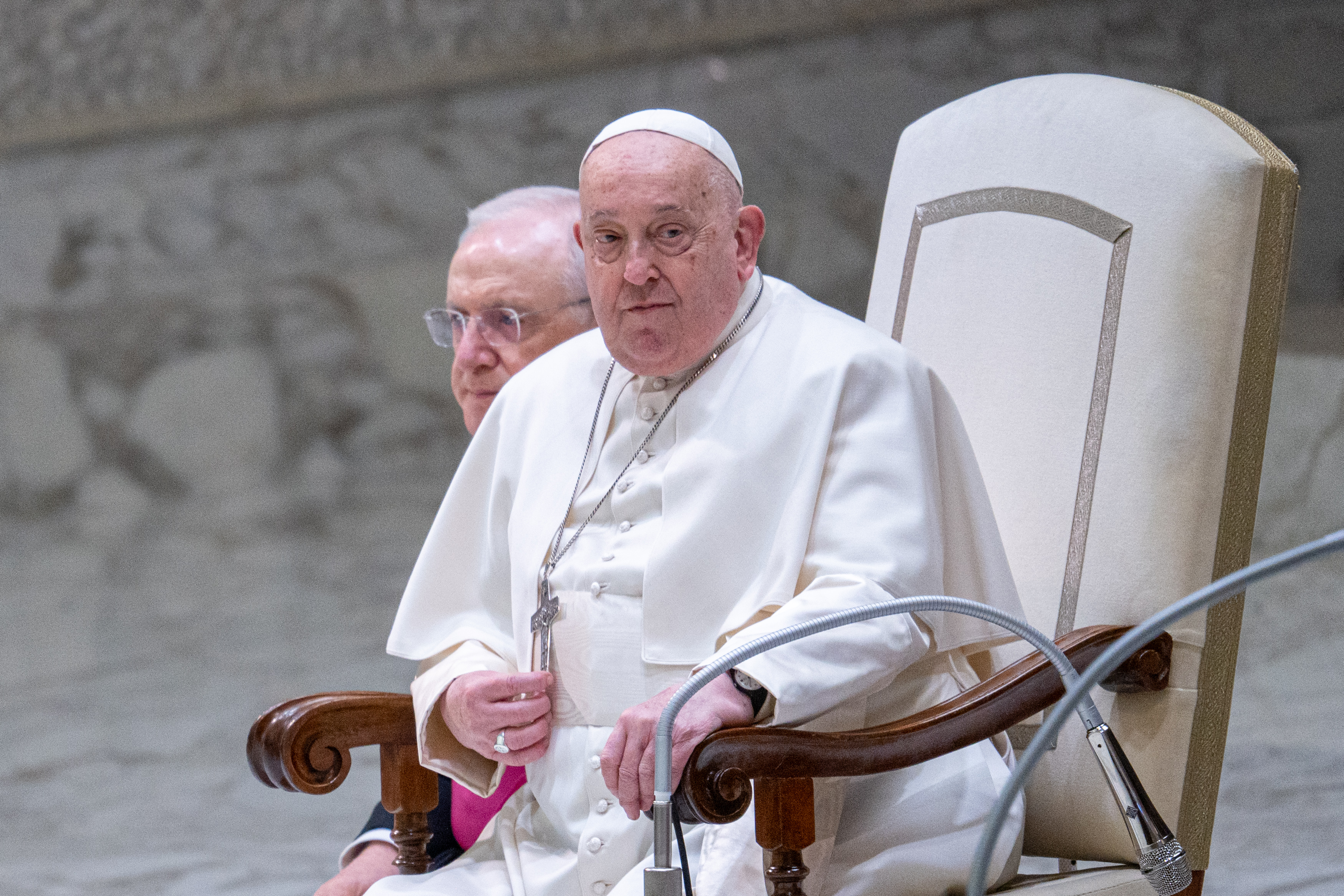
Pope Francis at the weekly general audience in the Vatican, February 12, 2025 | Source: Getty Images
Here’s a look at the chronology of the pontiff’s recent health condition and the provisions he left for health emergencies and incapacity due to his advanced age.
On March 3, the Vatican reported that Pope Francis suffered two episodes of respiratory failure caused by a “significant accumulation of endobronchial mucus” that obstructed his airways.
To treat this complication, doctors performed two bronchoscopies that removed the secretions and prevented further deterioration in his breathing. Despite the intervention, his condition remained “complex.”
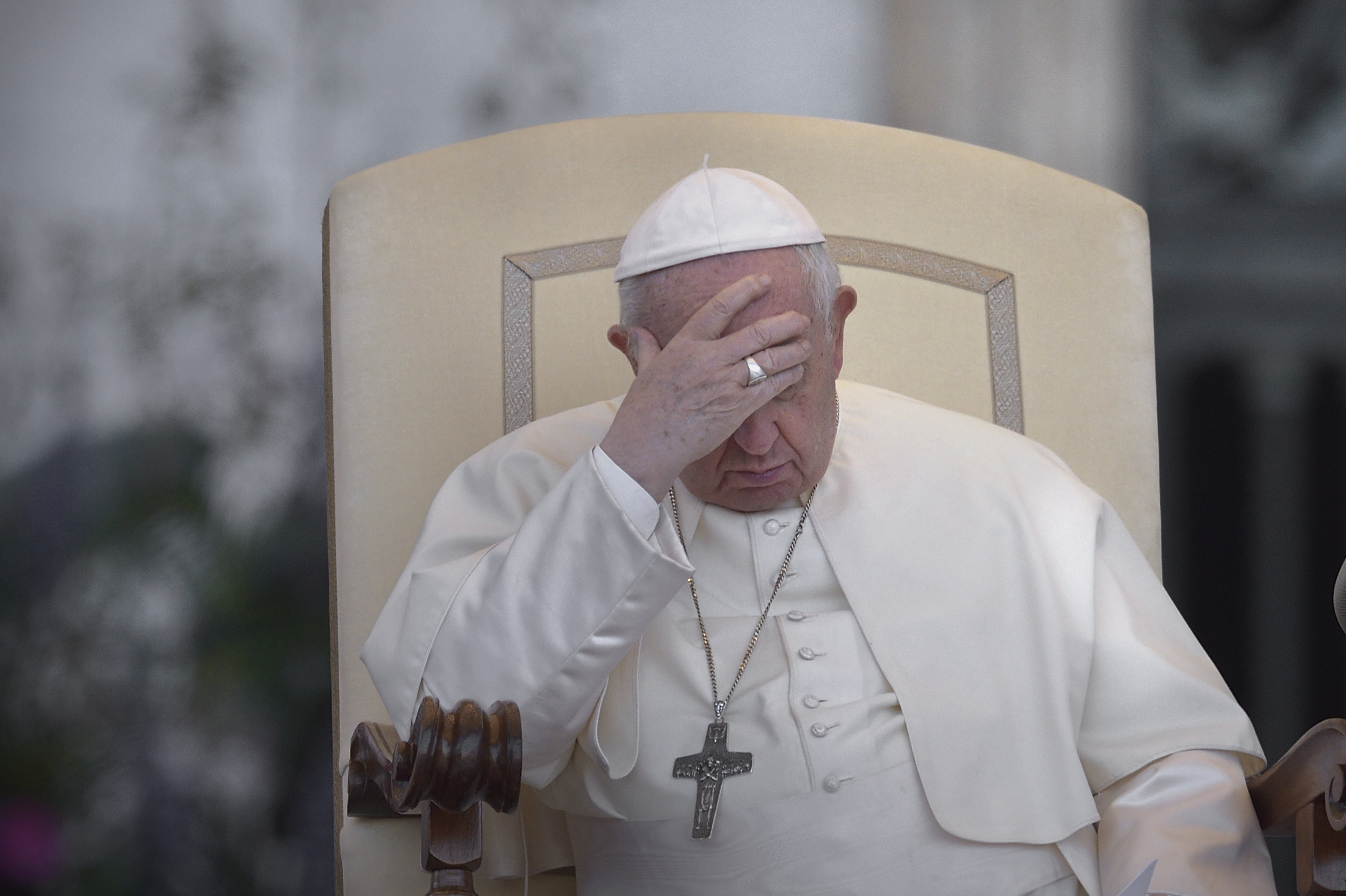
Pope Francis meets with Catholic teenagers in St. Peter’s Square. It was the Pope’s first meeting with Italian teenagers after the long break due to the COVID-19 pandemic. Vatican City, April 18, 2022 | Source: Getty Images
The treatment involved non-invasive mechanical ventilation, a way to deliver oxygen through a mask with regulated pressure. Following that, he received high-flow oxygen through a nasal tube to help him breathe more easily.
Hospitalized at the Gemelli Hospital in Rome, Francis received intensive therapy to control bilateral pneumonia. According to specialists, the accumulation of mucus in the lungs is a very complex condition, as it can cause persistent cough and bronchial spasms.
To help him rest better, the Vatican confirmed he would continue with non-invasive mechanical ventilation at night until the morning of Wednesday, March 5. Although his condition hadn’t gotten worse, his outlook remained uncertain.
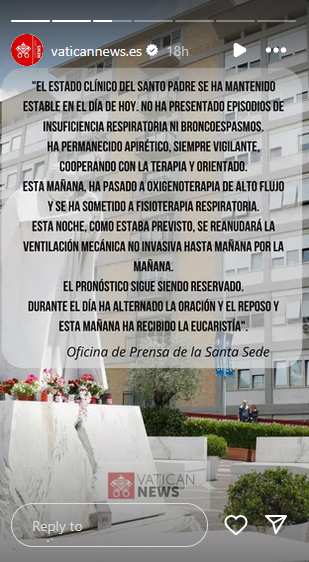
Vatican’s health update on Pope Francis | Source: Instagram Stories/vaticannews.es
Cardinal Robert Prevost led a rosary in St. Peter’s Square on that Monday night. Hundreds of followers gathered to pray for the pontiff’s health at that difficult time.
On March 5, the Vatican Press Office reported that the Pope “rested well during the night and woke up shortly after 8:00 a.m. (Vatican time).” His cardiac, renal, and blood values remained stable at that time, although he continued to receive oxygen treatment.
Vatican’s health update on Pope Francis | Source: Instagram Stories/vaticannews.es
Evolution of His Health Condition
Later on, doctors indicated that Pope Francis remained stable and had not presented new episodes of respiratory failure since March 4. It was also indicated that he would receive non-invasive mechanical ventilation at night and high-flow oxygen during the day. In addition, he continued respiratory and motor physiotherapy treatment.
Given his stable condition at the time, the Vatican announced that it would not issue another medical report until March 8, although the prognosis remained guarded.
His Followers Express Their Support on Social Media
On March 6, Pope Francis issued a message thanking his supporters for their prayers regarding his health. This generated a wave of reactions on social media.
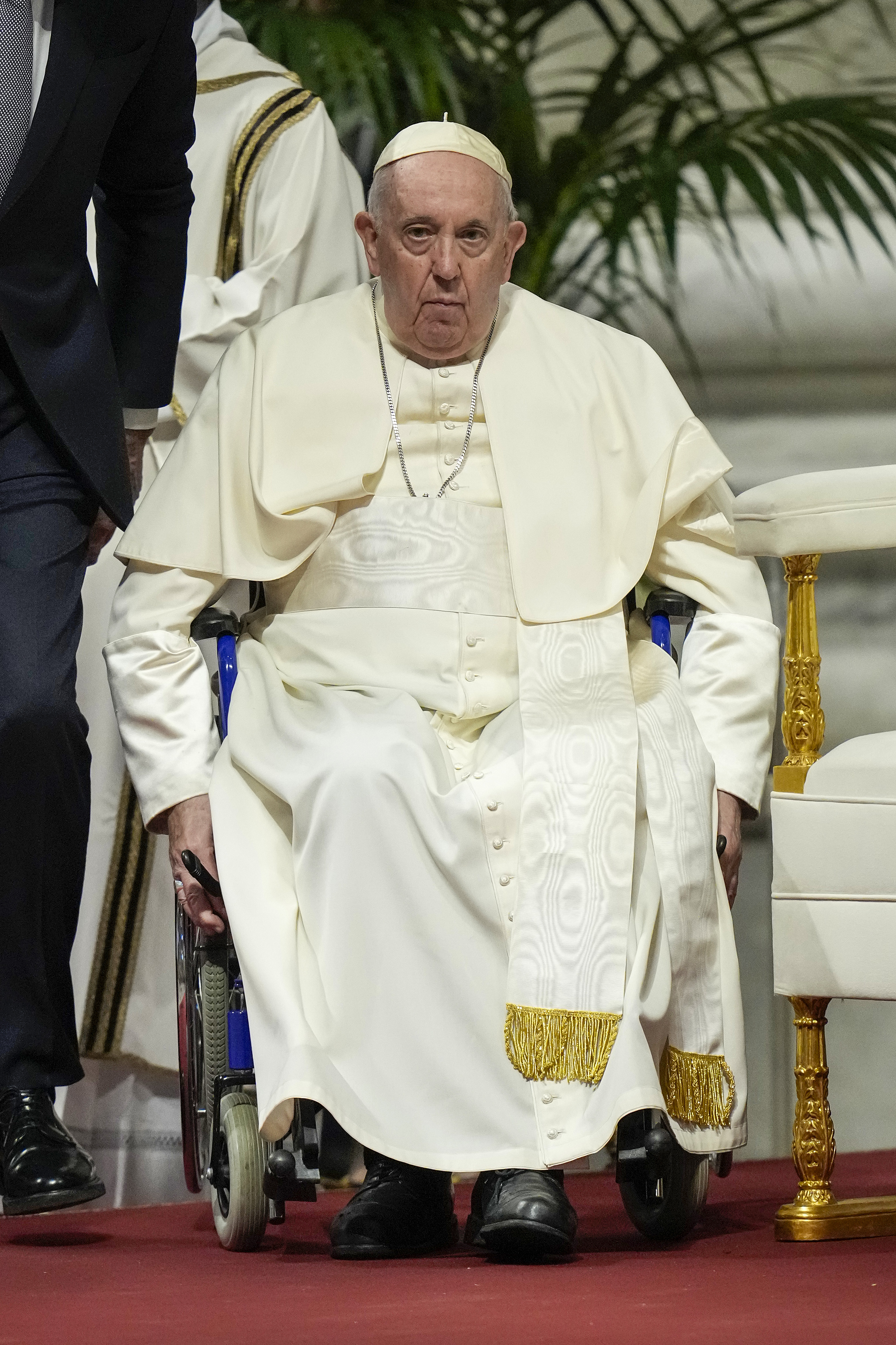
Pope Francis at a mass for the Feast of the Epiphany in St. Peter’s Basilica on January 6, 2023, in Vatican City | Source: Getty Images
“Dear Pope Francis, we continue to keep you in all our prayers. May our Lord give you strength,” one person commented. “God bless him and continue to recover Papa Francisco, we pray for you as you did for us. We are grateful to you,” someone else wrote.
“Bless him, he sounds tired. May God heal and strengthen him,” was another comment. “Amen. God is with you and will heal you. May the Blessed Virgin Mary always be with you,” said another person.
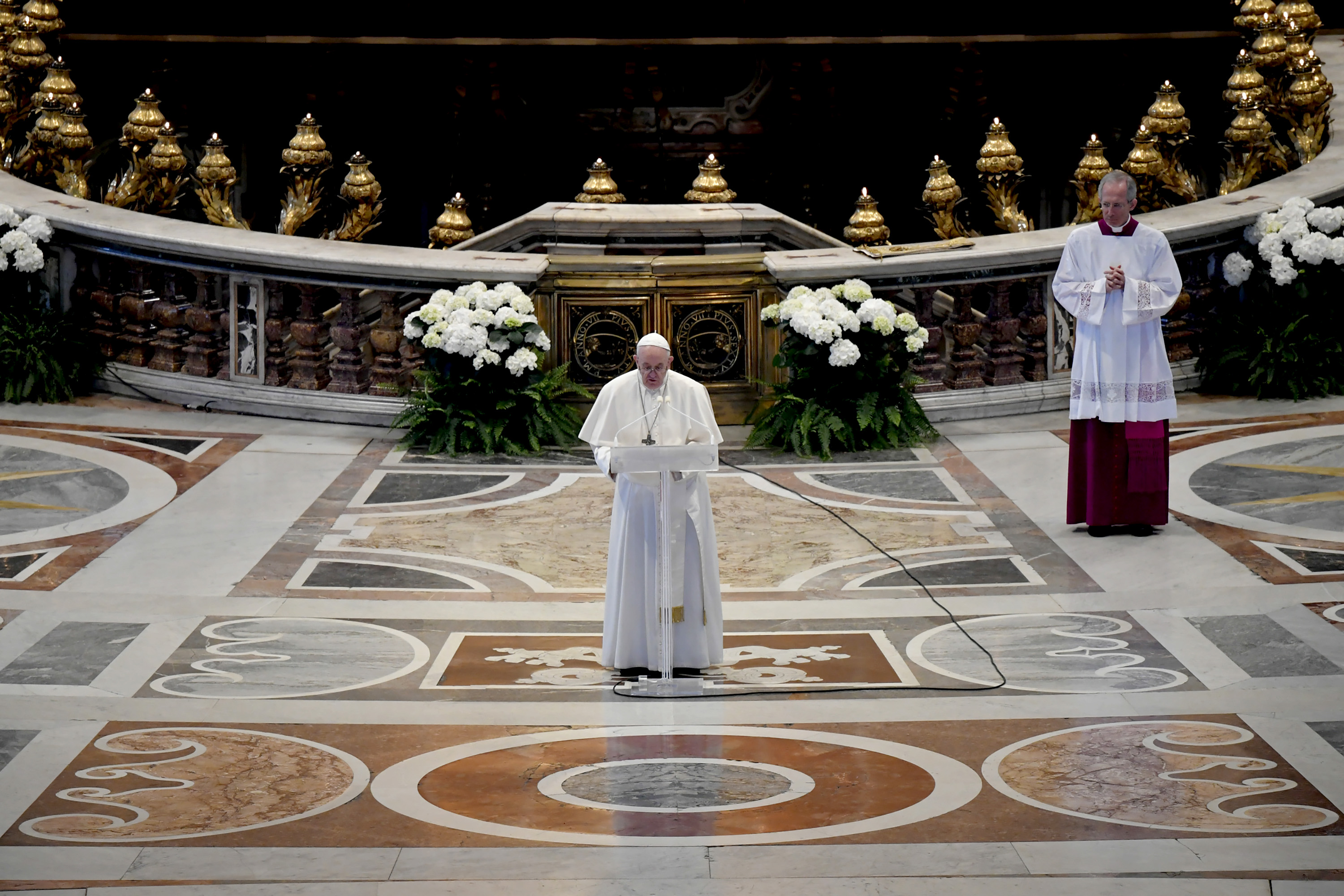
Pope Francis during Easter Mass in St. Peter’s Basilica on April 12, 2020, in Vatican City. | Source: Getty Images
“Blessed one, he sounds tired. May God heal and strengthen him,” expressed someone else. “Quick recovery. He sounds tired. May God grant him healing and may the Holy Virgin cover him with her mantle of love,” commented another.
In St. Peter’s Square, the Pope’s message was received with joy and hope, strengthening the faith of those who have closely followed his recovery.
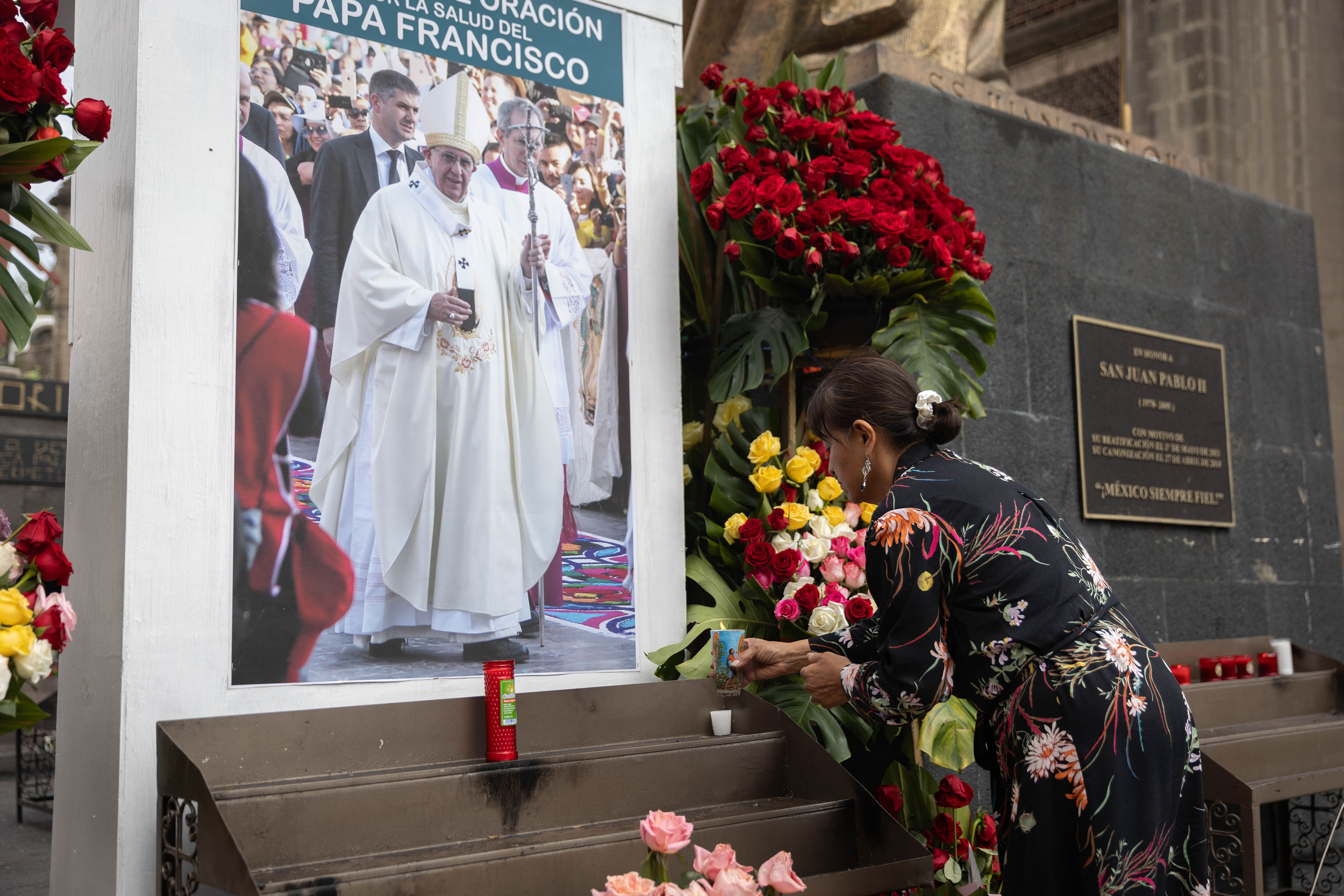
A woman places a candle in front of an image of Pope Francis outside the Basilica of Guadalupe, in Mexico City, Mexico, on February 23, 2025. | Source: Getty Images
While the Supreme Pontiff’s health remained stable, public attention was diverted to a document he signed in 2013.
Pope Francis’s Letter
Following Pope Francis’s state of health, attention focused on an important document he signed more than a decade ago: his letter of resignation. The letter was intended to be enacted in case of incapacity, a measure with few precedents in modern papal history.
Although his hospitalization and fragile state ignited speculation about whether this letter could soon take effect, reports indicated that the Pope accepted that “the end of his earthly life is very close,” making a formal resignation seem unnecessary.
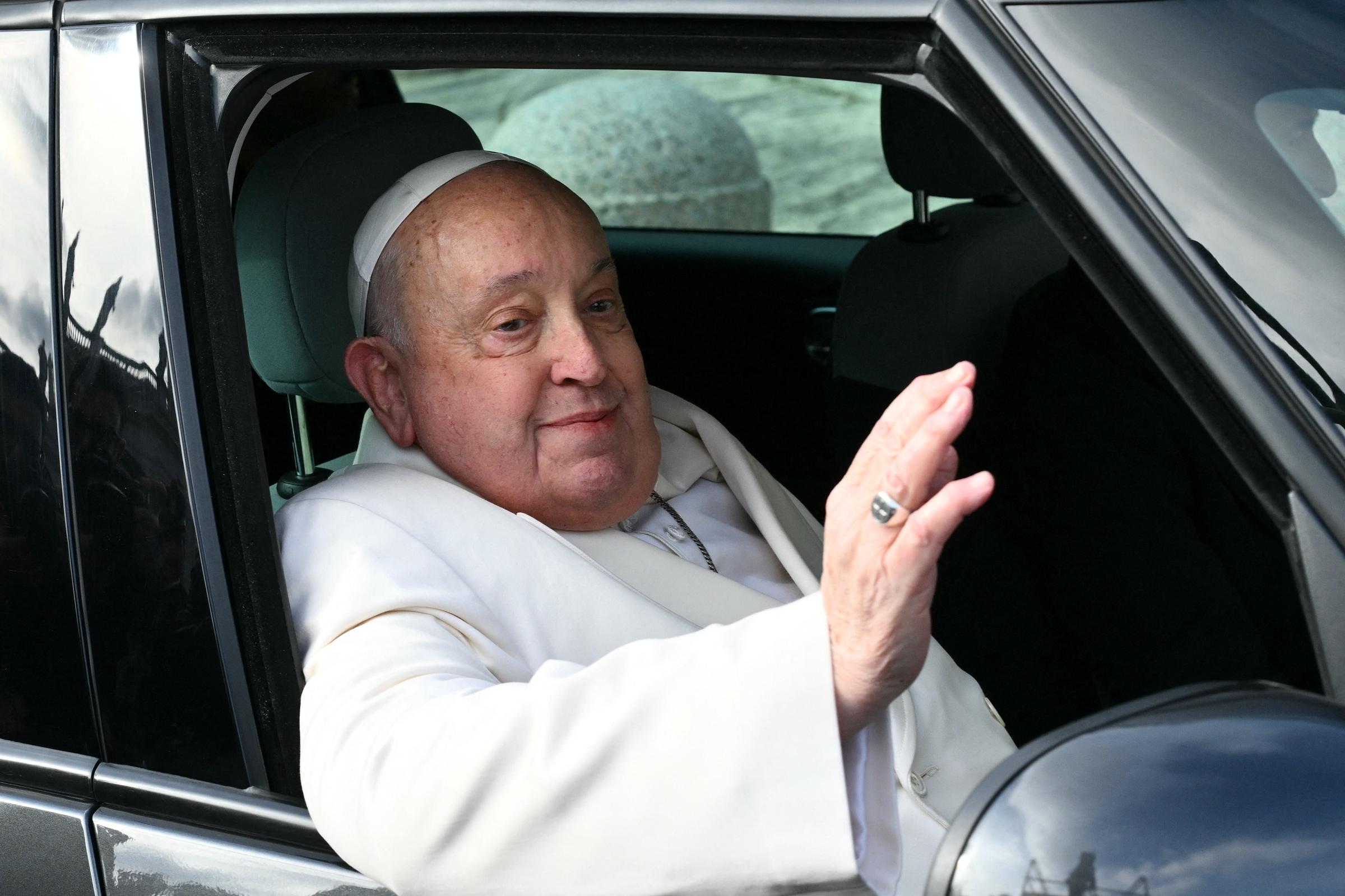
Pope Francis arriving to celebrate mass for the Jubilee of the Armed Forces in St. Peter’s Square in Vatican City on February 9, 2025. | Source: Getty Images
Back then, it was reported that cardinals would prepare for what could be a historic transition in the event of Pope Francis’ passing. “Around the world, about 200 cardinals would be preparing to fly to Rome,” Australian Chief Leader Writer Tess Livingstone explained.
“I’m quite sure that would be the case. Quite a few – probably about 50 – live in Rome as it is,” she added. A conclave would then be convened, the assembly of cardinals meeting behind closed doors, and tasked with electing a new Pope.
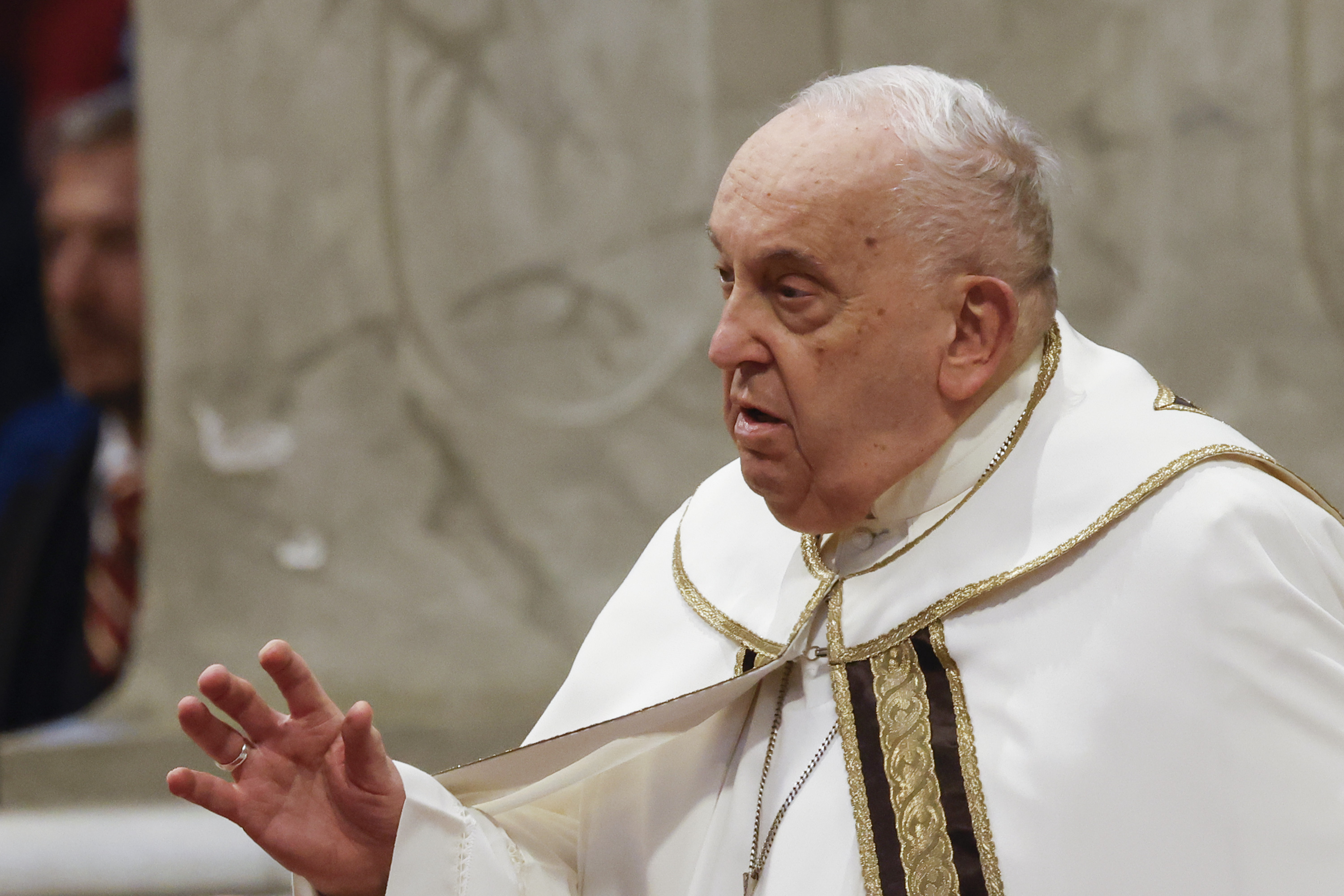
Pope Francis presides over a mass for the Epiphany in St. Peter’s Basilica on January 6, 2025, in Vatican City | Source: Getty Images
Among them, 138 cardinals under the age of 80 would be eligible to vote, while cardinals over 80 would participate in the pre-conclave discussions. “That promises to be extremely lively this time around,” Livingstone noted.
Given the Pope’s record of selecting cardinals from diverse backgrounds largely unfamiliar with each other, some speculate that the next conclave may be particularly unpredictable.
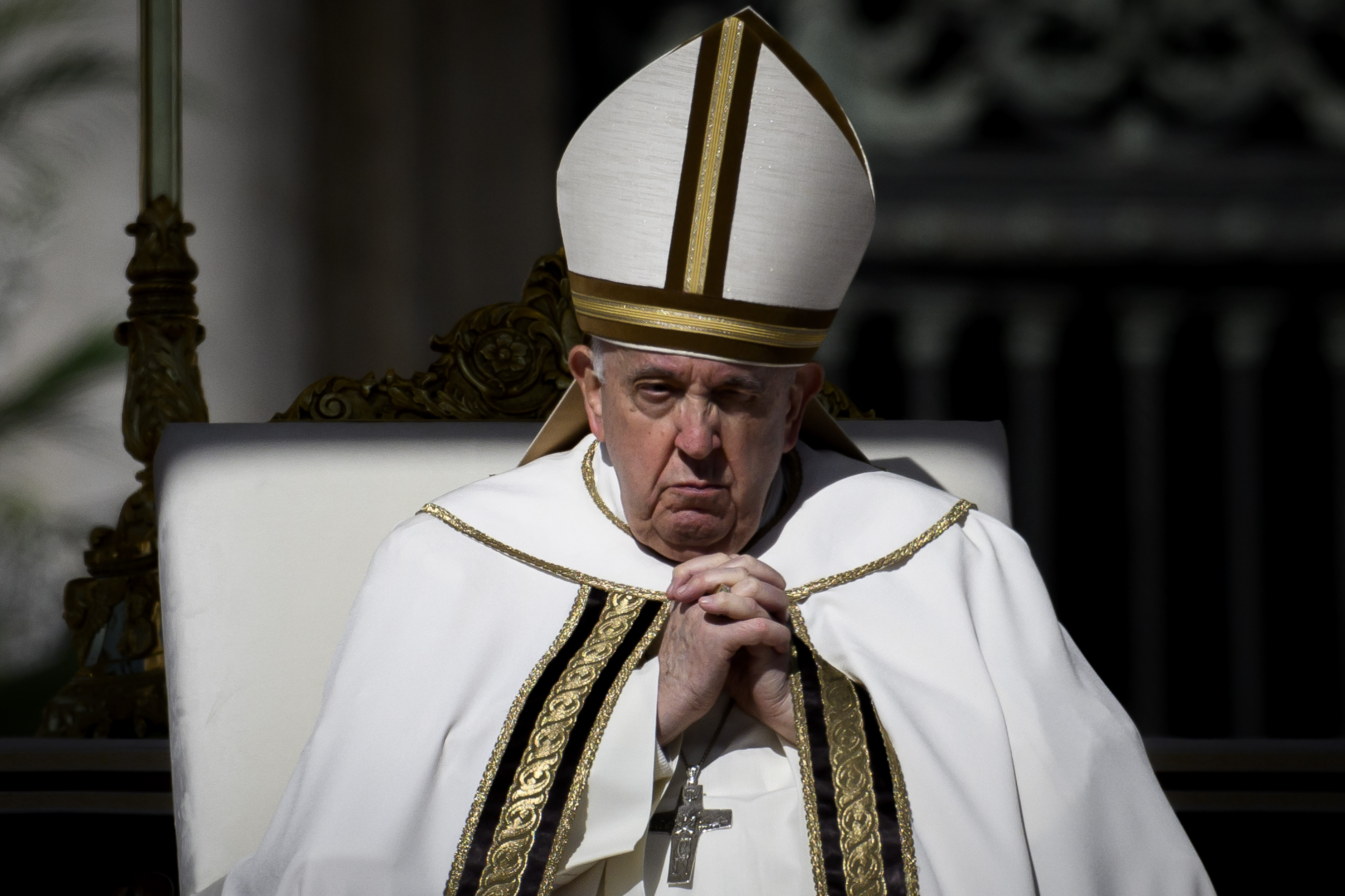
Pope Francis presides over Easter Mass in St. Peter’s Square on April 9, 2023, in Vatican City | Source: Getty Images
Despite his deteriorating health, the 88-year-old pontiff continued to work from the hospital, reportedly making governance decisions and approving new appointments.
He had also met with his second-in-command, Cardinal Pietro Parolin, and the head of the Vatican’s cabinet to discuss the canonization of five new saints.
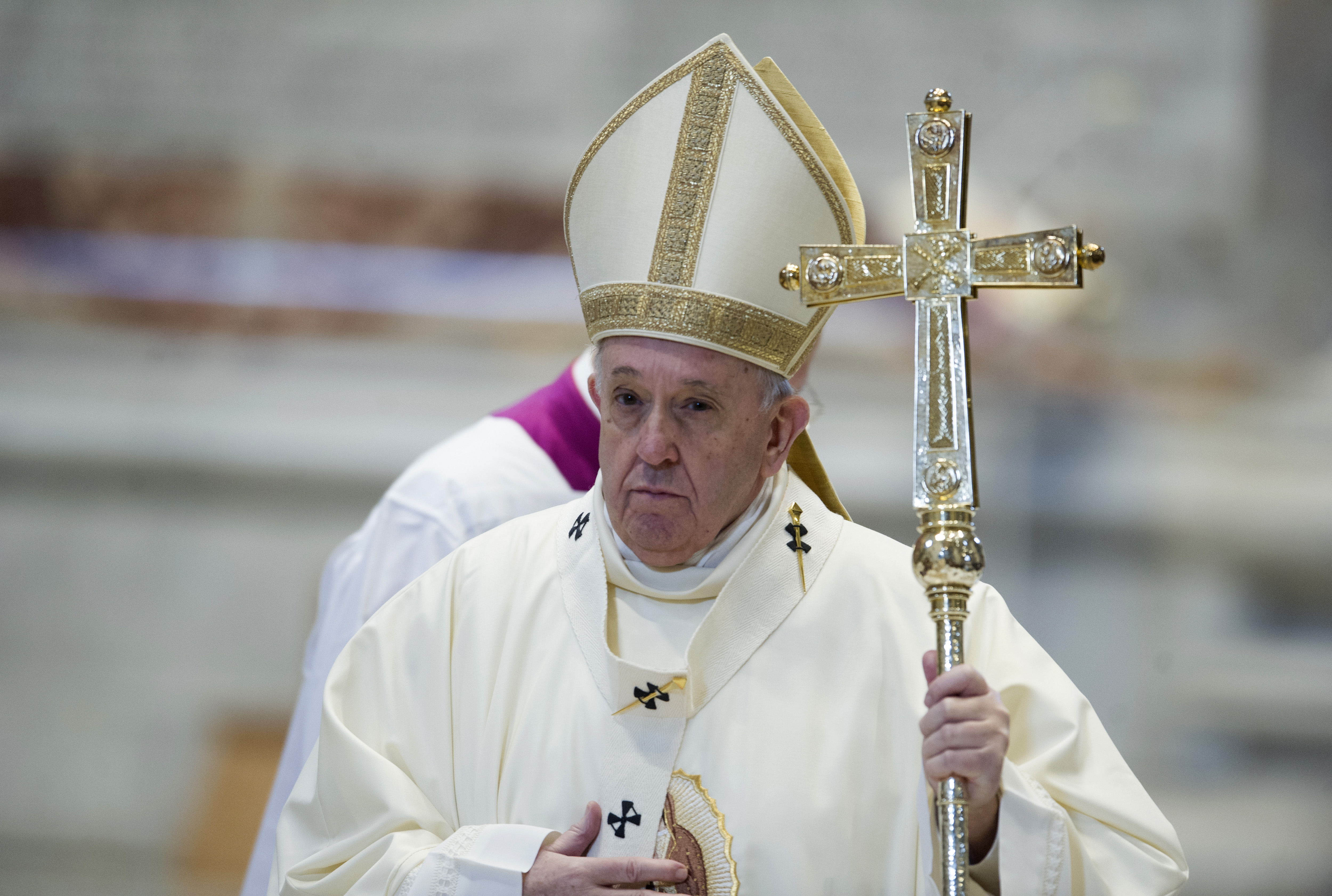
Pope Francis during the celebration of Mass for the Feast of Our Lady of Guadalupe at the Altar of the Cathedra in St. Peter’s Basilica, December 12, 2020, in Vatican City | Source: Getty Images
Furthermore, Pope Francis convened a consistory (a formal meeting of all cardinals) to determine when these saints would be officially recognized.
However, some members of the Church, including priests in Rome, speculated that the consistory may have a dual purpose, possibly signaling more significant events in the Vatican.
When asked about the whereabouts of the letter, the Pope speculated that Bertone might have passed it on to his successor, Cardinal Parolin.
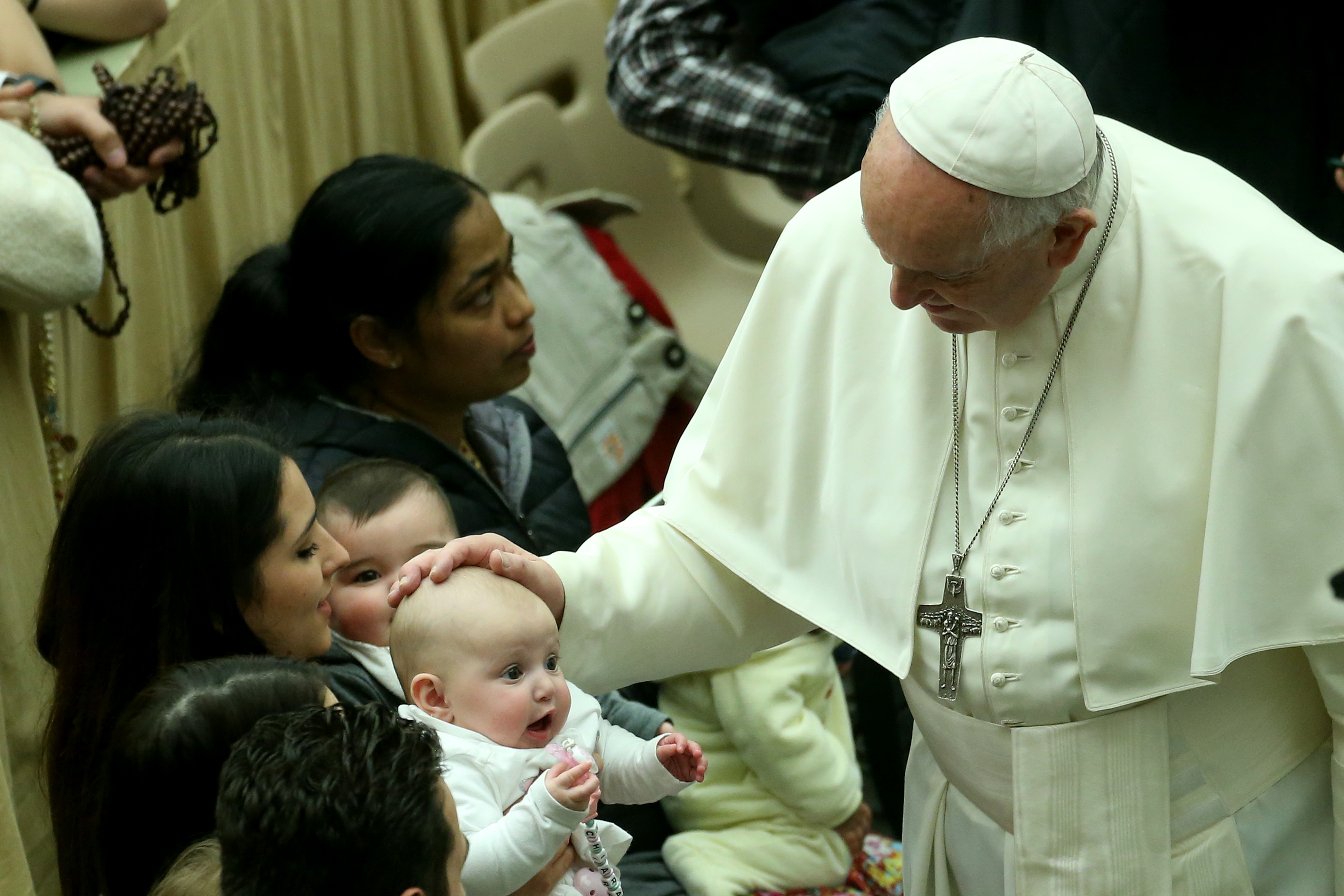
Pope Francis blessing a baby during his weekly audience in the Paul VI Hall on February 12, 2020, in Vatican City | Source: Getty Images
He is not the first Pope to take this precautionary measure. “Paul VI also left his resignation in writing in case of permanent impediment,” Pope Francis was told during the same interview.
“That’s right, and Pius XII I think did the same,” he replied. However, unlike Pope Benedict XVI, who became the first Pope in nearly 600 years to voluntarily resign, Pope Francis had never openly expressed an imminent intention to step down.
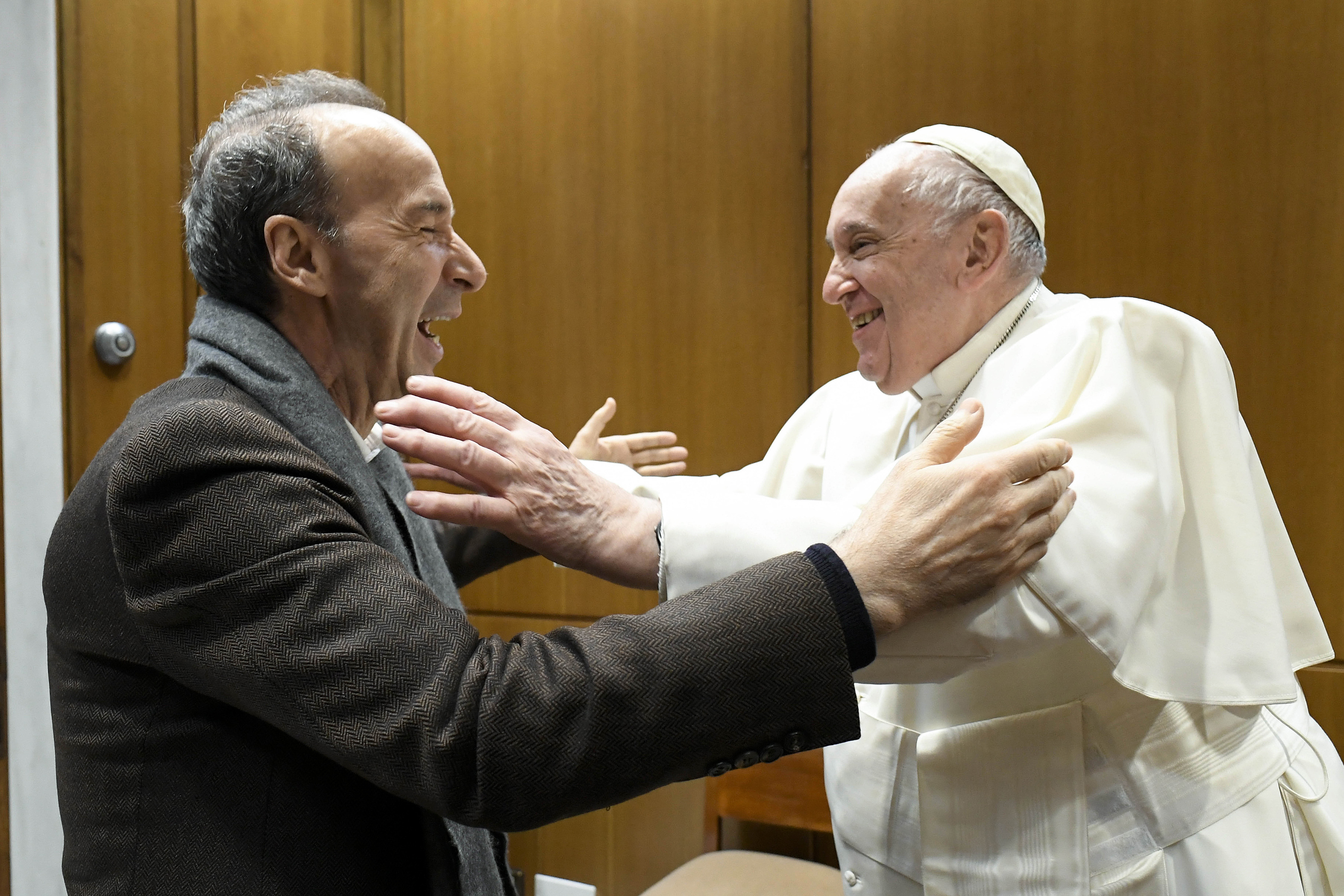
Pope Francis meets with Italian actor and director Roberto Benigni in the Paul VI Hall on December 7, 2022, in Vatican City | Source: Getty Images
According to two people familiar with the situation, the Pope was in severe pain and had privately expressed his certainty that he would not recover this time.
In response, he moved to secure the future direction of the Church by appointing key figures to influential positions, continuing his progressive agenda amidst ongoing ideological divisions within the Vatican.
In mid-March, the Vatican released the first image of Pope Francis since his hospitalization, showing the 88-year-old pontiff sitting in the private chapel of his apartment at the Gemelli Hospital in Rome.
The photograph, taken from behind, generated both relief and concern, as it confirmed that the Holy Father was still undergoing treatment but also highlighted his physical fragility.
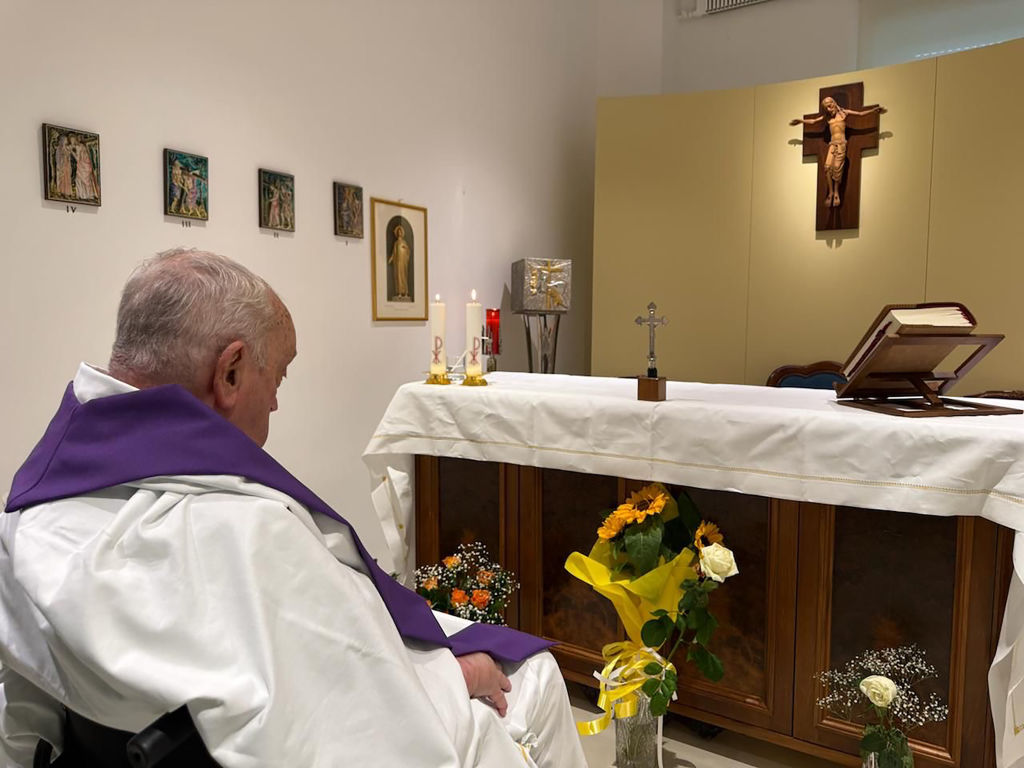
The current photo of the Pope released by the Vatican | Photo: Getty Images
On Instagram, the image was accompanied by the message:
“Today I would like to invite you to join me in praising the Lord, who never abandons us and who, in times of pain, places people at our side who reflect a ray of His love. I thank you all for your prayers.”
Despite his fragile condition, Pope Francis continued to offer words of hope. In his Sunday message, he acknowledged that he was “going through a time of testing” and expressed solidarity with others facing health challenges. He emphasized that even when the body is weak, nothing can prevent us from loving, praying, and helping others—words that resonated deeply with millions of faithful around the world.
A medical report from mid-March confirmed that his condition was stable. He was still receiving high-flow oxygen therapy, which allowed doctors to gradually reduce his nighttime use of mechanical ventilation. He remained under medical treatment and continued motor and respiratory physiotherapy, showing steady but slow improvement, though hospitalization was still required.
Reaction on Social Media
Some were taken aback by the Pope’s visibly deteriorated appearance.
“He doesn’t look like Pope Francis,” someone remarked on Instagram.
“Who is this gentleman, and what is he doing here?” another questioned on Facebook.
“It doesn’t look like him at all,” added another commenter.
Others noted the uncanny resemblance between the image and the last known photo of Pope John Paul II on Good Friday in 2005, taken from behind.
“Do you remember the image of John Paul II from behind?” one Facebook user asked. Another wrote, “This story has already been told—March to April 2005.”
Speculation grew that Pope Francis’s situation echoed past Vatican tendencies to downplay the severity of a pontiff’s illness.
“This is how they showed John Paul II in a photo—he was already dead. Is history repeating itself?” someone wrote.
Media outlets also recalled how Pope John Paul II’s Parkinson’s disease was only officially confirmed after years of visible symptoms, and how John XXIII’s cancer was only revealed posthumously.
Rumors and suspicion continued to swirl.
“The Pope has already died and they’re hiding the truth. Why not just release a real video to prove he’s alive?” one commenter asked.
Some even suggested the person in the photo was an imposter:
“That’s not the Pope,” one wrote.
“That’s not Jorge Bergoglio.”
“Do they think we’re blind? That’s not him,” said another.
Still, many others responded with compassion, simply posting messages like:
“Wishing him a speedy recovery.”
The Vatican’s Response
In response to public concern, the Vatican continued releasing updates on the Pope’s condition. From the hospital, Pope Francis remained engaged in his duties—most notably approving the schedule for a Vatican assembly planned for 2028.
This steadfast commitment, even in the face of serious illness, reaffirmed Francis’s enduring dedication to the Church and its followers—right up to the very end.
